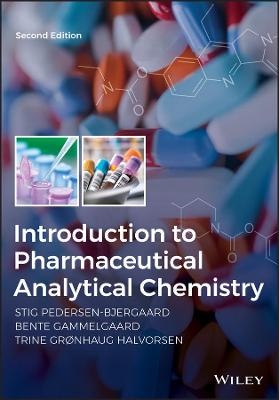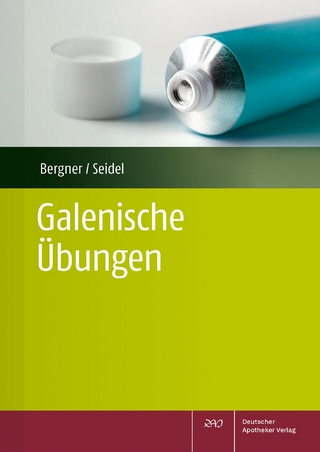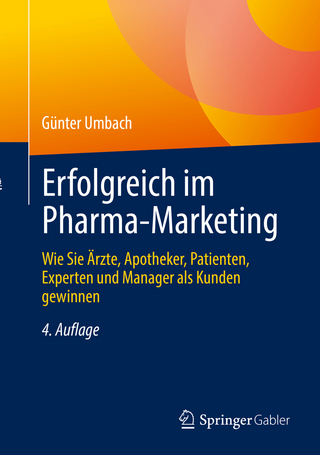
Introduction to Pharmaceutical Analytical Chemistry
John Wiley & Sons Inc (Verlag)
978-1-119-36272-2 (ISBN)
Introduction to Pharmaceutical Analytical Chemistry enables students to gain fundamental knowledge of the vital concepts, techniques and applications of the chemical analysis of pharmaceutical ingredients, final pharmaceutical products and drug substances in biological fluids. A unique emphasis on pharmaceutical laboratory practices, such as sample preparation and separation techniques, provides an efficient and practical educational framework for undergraduate studies in areas such as pharmaceutical sciences, analytical chemistry and forensic analysis. Suitable for foundational courses, this essential undergraduate text introduces the common analytical methods used in quantitative and qualitative chemical analysis of pharmaceuticals.
This extensively revised second edition includes a new chapter on chemical analysis of biopharmaceuticals, which includes discussions on identification, purity testing and assay of peptide and protein-based formulations. Also new to this edition are improved colour illustrations and tables, a streamlined chapter structure and text revised for increased clarity and comprehension.
Introduces the fundamental concepts of pharmaceutical analytical chemistry and statistics
Presents a systematic investigation of pharmaceutical applications absent from other textbooks on the subject
Examines various analytical techniques commonly used in pharmaceutical laboratories
Provides practice problems, up-to-date practical examples and detailed illustrations
Includes updated content aligned with the current European and United States Pharmacopeia regulations and guidelines
Covering the analytical techniques and concepts necessary for pharmaceutical analytical chemistry, Introduction to Pharmaceutical Analytical Chemistry is ideally suited for students of chemical and pharmaceutical sciences as well as analytical chemists transitioning into the field of pharmaceutical analytical chemistry.
STIG PEDERSEN-BJERGAARD is Professor at the Department of Pharmacy, University of Oslo and Professor at the Department of Pharmacy, University of Copenhagen. BENTE GAMMELGAARD is Professor at the Department of Pharmacy, University of Copenhagen. TRINE GRØNHAUG HALVORSEN is Associate Professor at the Department of Pharmacy, University of Oslo.
Preface to the Second Edition xv
Abbreviations xvii
Symbols and Units xxi
1 Introduction to Pharmaceutical Analytical Chemistry 1
1.1 Introduction 1
1.2 Pharmaceutical Analytical Chemistry 4
1.3 This Textbook 7
2 Marketing Authorizations, Pharmaceutical Manufacturing, and International Pharmacopoeias 9
2.1 Introduction 9
2.2 Marketing Authorization and Industrial Production 10
2.3 Pharmacopoeias 13
2.4 Life Time of Pharmaceutical Preparations and Ingredients 14
3 Fundamentals of Bases, Acids, Solubility, Polarity, Partition, and Stereochemistry 17
3.1 Acids, Bases, pH, and pKa 17
3.2 Buffers 19
3.3 Acid and Base Properties of Drug Substances 20
3.4 Distribution Between Phases 21
3.5 Stereoisomers 26
3.6 Active Pharmaceutical Ingredients – A Few Examples 28
3.7 Stability of Drug Substances 34
4 Fundamentals of Pharmaceutical Analytical Chemistry 37
4.1 Pharmaceutical Analytical Chemistry 37
4.2 How to Specify Quantities, Concentrations, and Compositions of Mixtures 39
4.3 Laboratory Equipment 43
4.4 How to Make Solutions and Dilutions 52
4.5 Errors, Accuracy, and Precision 54
4.6 Statistical Tests 56
4.7 Linear Regression Analysis 65
4.8 How to Present an Analytical Result 68
4.9 Additional Words and Terms 70
5 Titration 73
5.1 Introduction 73
5.2 Potentiometric Titration and Electrodes 79
5.3 Aqueous Acid–Base Titrations 82
5.4 Titration in Non-aqueous Solvents 88
5.5 Redox Titrations 91
5.6 Alternative Principles of Titration 95
6 Introduction to Spectroscopic Methods 97
6.1 Electromagnetic Radiation 97
6.2 Molecules and Absorption of Electromagnetic Radiation 99
6.3 Absorbing Structures – Chromophores 101
6.4 Fluorescence 101
6.5 Atoms and Electromagnetic Radiation 102
7 UV-Vis Spectrophotometry 105
7.1 Areas of Use 105
7.2 Quantitation 106
7.3 Absorbance Dependence on Measurement Conditions 108
7.4 Identification 110
7.5 Instrumentation 111
7.6 Practical Work and Method Development 115
7.7 Test of Spectrophotometers 116
7.8 Fluorimetry 119
8 IR Spectrophotometry 121
8.1 IR Spectrophotometry 121
8.2 Instrumentation 125
8.3 Recording by Transmission, Diffuse Reflectance, and Attenuated Total Reflection 125
8.4 Instrument Calibration 128
8.5 NIR Spectrophotometry 129
9 Atomic Spectrometry 131
9.1 Applications of Atomic Spectrometry 131
9.2 Atomic Absorption Spectrometry (AAS) 132
9.3 AAS Instrumentation 132
9.4 AAS Practical Work and Method Development 137
9.5 Atomic Emission Spectrometry (AES) 138
9.6 Flame Photometry 139
9.7 Inductively Coupled Plasma Emission Spectrometry 140
9.8 Inductively Coupled Plasma Mass Spectrometry 141
10 Introduction to Chromatography 143
10.1 Introduction 143
10.2 General Principles 144
10.3 Retention 146
10.4 Efficiency 149
10.5 Selectivity 151
10.6 Resolution 152
10.7 Peak Symmetry 154
10.8 The Dynamics of Chromatography 155
11 Separation Principles in Liquid Chromatography 159
11.1 Introduction 159
11.2 Reversed-Phase Chromatography 160
11.3 Ion-Pair Chromatography 168
11.4 Normal-Phase Chromatography 170
11.5 Thin-Layer Chromatography 173
11.6 Hydrophilic Interaction Chromatography 175
11.7 Ion Exchange Chromatography 177
11.8 Size Exclusion Chromatography 178
11.9 Chiral Separations 180
11.10 Supercritical Fluid Chromatography 182
12 High Performance Liquid Chromatography 185
12.1 Introduction 185
12.2 The Column 186
12.3 Scaling Between Columns 188
12.4 Pumps 189
12.5 Injectors 191
12.6 Detectors 192
12.7 Mobile Phases 197
12.8 Solvents for Sample Preparation 198
13 Gas Chromatography 199
13.1 Introduction 199
13.2 Basic Principle 200
13.3 Instrumentation 201
13.4 Carrier Gas 203
13.5 Stationary Phases 205
13.6 Retention 207
13.7 Columns 208
13.8 Injection 209
13.9 Detectors 211
13.10 Derivatization 213
14 Electrophoretic Methods 215
14.1 Introduction 215
14.2 Principle and Theory 216
14.3 Gel Electrophoresis 218
14.4 SDS-PAGE 220
14.5 Western Blotting 221
14.6 Isoelectric Focusing 223
14.7 Capillary Electrophoresis 223
15 Mass Spectrometry 231
15.1 Introduction 231
15.2 Basic Theory of Mass Spectrometry 233
15.3 Ionization 235
15.4 The Mass Spectrometer as a Chromatographic Detector – Data Acquisition 236
15.5 Quantitation by MS 238
15.6 Identification by MS 238
15.7 Instrumentation 251
16 Sample Preparation 259
16.1 When is Sample Preparation Required? 259
16.2 Main Strategies 260
16.3 Recovery and Enrichment 261
16.4 Liquid–Liquid Extraction 263
16.5 Solid–Liquid Extraction 269
16.6 Solid Phase Extraction 270
17 Quality of Analytical Data and Validation 281
17.1 Instrumental Signals 281
17.2 Calibration Methods 282
17.3 Analytical Procedures 290
17.4 Validation 291
17.5 System Suitability 301
18 Chemical Analysis of Pharmaceutical Ingredients 305
18.1 Pharmaceutical Ingredients, Production, and Control 306
18.2 Pharmacopoeia Monographs 308
18.3 Impurities in Pharmaceutical Ingredients 321
18.4 Identification of Pharmaceutical Ingredients 324
18.5 Impurity Testing of Pharmaceutical Ingredients (Pure Chemical Ingredients) 344
18.6 Identification and Impurity Testing of Organic Multi-Chemical Ingredients 368
18.7 Assay of Pharmaceutical Ingredients 375
18.8 Chemical Analysis of Pharmaceutical Ingredients Not Included in Pharmacopoeias 388
19 Chemical Analysis of Pharmaceutical Preparations 389
19.1 Chemical Analysis of Pharmaceutical Preparations 389
19.2 Monographs and Chemical Analysis 390
19.3 Identification of the API 395
19.4 Assay of the Active Pharmaceutical Ingredient 410
19.5 Chemical Tests for Pharmaceutical Preparations 427
20 Bioanalysis Chemical Analysis of Pharmaceuticals in Biological Fluids 433
20.1 Bioanalysis 433
20.2 Biological Fluids 438
20.3 Bioanalytical Methods – An Overview 440
20.4 Sampling 440
20.5 Sample Preparation 441
20.6 Separation and Detection 446
20.7 Quantitation 447
20.8 Screening 453
21 Chemical Analysis of Biopharmaceuticals 459
21.1 Biopharmaceuticals 459
21.2 Biopharmaceuticals versus Small Molecule APIs 463
21.3 Biopharmaceuticals and Pharmacopoeias 464
21.4 Production of Biopharmaceuticals 465
21.5 Identification Procedures for Biopharmaceuticals (Active Substance) 467
21.6 Impurity Tests for Biopharmaceuticals (Active Substances) 488
21.7 Assay of Biopharmaceuticals (Active Substance) 498
21.8 Monoclonal Antibodies 500
21.9 Analysis of Biopharmaceutical Products 502
21.10 Bioanalysis of Biopharmaceuticals Using LC-MS/MS 503
Index 505
| Erscheinungsdatum | 08.04.2019 |
|---|---|
| Verlagsort | New York |
| Sprache | englisch |
| Maße | 170 x 244 mm |
| Gewicht | 953 g |
| Themenwelt | Medizin / Pharmazie ► Pflege |
| Medizin / Pharmazie ► Pharmazie ► PTA / PKA | |
| Naturwissenschaften ► Biologie | |
| Naturwissenschaften ► Chemie ► Analytische Chemie | |
| ISBN-10 | 1-119-36272-5 / 1119362725 |
| ISBN-13 | 978-1-119-36272-2 / 9781119362722 |
| Zustand | Neuware |
| Informationen gemäß Produktsicherheitsverordnung (GPSR) | |
| Haben Sie eine Frage zum Produkt? |
aus dem Bereich


